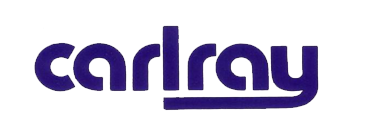Expansion Foam: How and Where to Use It
Expansion form or spray foam is one of the most popular insulation materials used for sealing gaps between building components. Spray foam is an excellent insulation and handy tool for home improvement. There are many ways to hack expanding foam into bathrooms, kitchens, and ceilings, and the material can even be used outdoors under concrete walkways and rocks.
What is an Expansion Form?
Expanding foam is a type of insulation material used to insulate pipes and ductwork. Expansion foam is foam used to fill voids. The foam expands to fill any space available. This makes it useful for sealing cracks and holes. The process of installing expansion foam insulation is fairly simple. First, you pour the expanding foam into the area where you’d like to insulate. Once the foam expands, it forms a protective layer between the existing walls and the rest of the structure. This creates a barrier that limits moisture and prevents air infiltration into the wall cavities.
When you install expansion foam insulation, you typically must use a specific primer/sealer product first. This helps bond the foam to the concrete, brick, stucco, etc. It also acts as an adhesive, ensuring that the foam sticks to the surface.
Expanding foam insulation is made up of three basic components:
Foam core: This consists of a mix of resin and chemicals that act as an adhesive when mixed together.
Expanding agent: This is usually an alkaline catalyst that makes the resin foamable.
Blowing agent: This component contains nitrogen or carbon dioxide, which causes the foam to expand when exposed to heat.
Expansion foam insulation is a type of thermal insulation commonly used in construction. It is commonly known as R-value 5 and R-value 10, and it is considered to be a type of polyurethane foam. It is made up of millions of tiny air bubbles in a liquid resin matrix. This allows it to expand and fill any void space quickly and effectively. Use expansion foam as part of your home improvement projects to save money and create a better looking house.
Here are two types of expanding foam:
- Regular expansion foam
- Expandable polyurethane foam
Regular expanding foam is made of polymer beads mixed with a chemical blowing agent that causes gas bubbles. Once these bubbles are released into the air, they expand quickly, filling any empty space within seconds. This type of foam is usually used to seal cracks. To use regular expansion foam, mix about 50 parts water with 1 part regular expansion foam. Then, pour the mixture into cracks and crevices. Let the foam dry naturally until air bubbles appear. Once the foam dries completely, the expanded foam seals the crack.
Expandable polyurethane foams are similar to regular polyurethane foam, except they contain a chemical called CFC-11. This chemical releases carbon dioxide when heated. Carbon dioxide causes the expandable polyurethane’s cells to bond together tightly to form a solid mass. Here are some uses of expandable polyurethanes:
- Sealing leaks
- Pouring concrete
- Installing insulation
- Blocking cracks
Expandable polyurethane foam is poured into a form until it expands and fills the space between the pipes. This expansion causes the foam to adhere and seal the pipe walls. Once filled, the foam stays where it’s placed and does not leak. Spray foams come in various shades of colours such as yellow and white, and they are usually applied using specialised equipment.
Uses of Expansion Form
- Thermal Insulation: Expansion foam insulation helps prevent heat transfer from one place to another in homes. That means it insulates the walls and ceilings from transferring heat into the rooms where people live. It also reduces the amount of heat lost from a room or building.
- Waterproofing: Another benefit of using expansion foam in your attic is its waterproofing abilities. Waterproofing is an important step in keeping water out of your attic. If moisture gets trapped inside the attic, it can cause rotting wood beams and rafters, which leads to serious health consequences.
- Fire Protection: Fire protection is another valuable feature of this type of insulation. In the event of a fire, expanded polystyrene insulation provides a barrier between the flames and your structure. It slows down the spread of flames and smoke. Expanded polystyrene insulation does not contain fibreglass, which makes it safe for use near electrical wiring.
- Sound Reduction: Sound reduction is yet another useful attribute of expansion foam insulation. By reducing sound, you are giving yourself a quiet bedroom or living room.
- Home Improvement Project: DIY’s love expansion foam insulation because it saves them time and money.
- Water flowing through pipes can be quieted by applying pressure around them.
- Roof deck insulation
How To Use Spray Foam
When applying spray foam there are several steps involved. These include:
- Cleaning surfaces
- Preparing areas to be insulated
- Applying foam
- Removing excess foam
- Curing foam
- Testing for leaks
- Finishing
So when you’re looking for a way to fill voids, whether they are big or small, you probably need to consider using an expansion foam. Just remember to choose the right type depending on your specific application. Buy expansion forms for your next project from Western Sydney Building Supplies.
Read More:


